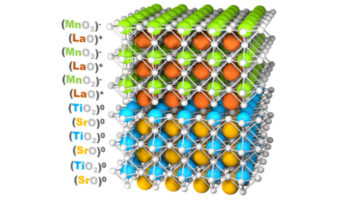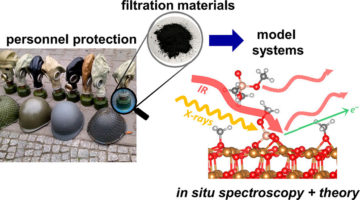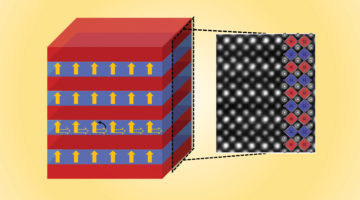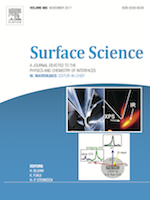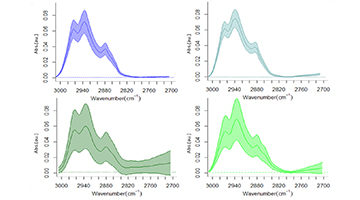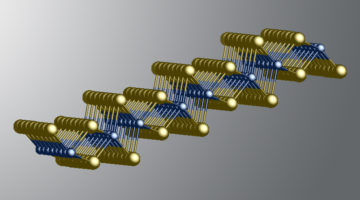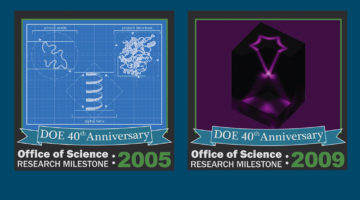A polar mismatch between nonferromagnetic materials drives an electronic reconstruction in which interfacial ferromagnetism is induced. The emergence of such functionality at interfaces could enable new types of electronics for a range of applications, including logic, memory, sensing, and more. Read more »![]()
ALS Work Using Spectroscopy
These techniques are used to study the energies of particles that are emitted or absorbed by samples that are exposed to the light-source beam and are commonly used to determine the characteristics of chemical bonding and electron motion.
Studying Gas Mask Filters So People Can Breathe Easier
Scientists have put the x-ray spotlight on composite materials in respirators used by the military, police, and first responders. The results provide reassuring news about the effectiveness of current filters and provide fundamental information that could lead to more advanced gas masks as well as protective gear for civilian applications. Read more »
A New Way to Tune Emergent Magnetism
Perpendicular magnetic anisotropy (PMA)—where magnetic moments in a thin film preferentially point out of the plane of the film—is an emergent phenomenon of both fundamental and technological interest. A combination of x-ray techniques demonstrate how to tune PMA in transition-metal oxide multilayers. Read more »![]()
![]()
New Catalyst Gives Artificial Photosynthesis a Big Boost
Researchers have created a new catalyst that brings them one step closer to artificial photosynthesis — a system that would use renewable energy to convert carbon dioxide (CO2) into stored chemical energy. Read more »
Coral Exoskeleton Growth Begins Inside Living Tissue
Researchers have discovered some good news regarding corals: the mechanism by which their exoskeletons grow may help them resist the effects of ocean acidification. The discovery, made with PEEM studies, has ramifications not only for the health of coral reefs, but for applications such as 3D printing as well. Read more »![]()
![]()
Scientists Solve a Magnesium Mystery in Rechargeable Battery Performance
Rechargeable batteries based on magnesium, rather than lithium, have the potential to pack more energy into smaller batteries. However, researchers have discovered a surprising set of chemical reactions involving magnesium that degrade battery performance even before the battery can be charged up. Read more »
CO Adsorption on Pd(100) Studied by Multimodal Ambient Pressure X-Ray Photoelectron and Infrared Reflection Absorption Spectroscopies
The first combined infrared spectroscopy and ambient-pressure XPS study was demonstrated at Beamline 11.0.2. The in situ vibrational and core-level spectroscopies in the Torr pressure range offer complementary information on the properties of surfaces and adsorbates while closing the pressure gap between laboratory measurements and applications. The multimodal spectroscopy also allowed the identification of the C 1s binding energy and quantification of an uncommon atop CO species on a Pd(100) surface. Read more »
Microbes Linked to Drier Human Skin
Genetic analyses and infrared studies have found that archaea, a type of microbe commonly found in extreme environments, are also found on human skin. The results suggest that an increase in archaea is linked to reduced skin moisture and that they are most abundant in subjects younger than 12 and older than 60. Read more »
Researchers Confirm New 2D Topolgical Insulator
Researchers have established that a particularly stable form of WTe2 is a two-dimensional topological insulator, confirming recent predictions. The findings should provide new opportunities for fundamental studies of topological phenomena and for next-generation spintronic applications. Read more »![]()
![]()
ALS Work Highlighted in DOE Top 40 Countdown
To celebrate DOE’s 40th anniversary (October 1, 2017), the Office of Science (SC) collected 40 scientific milestones from the previous 40 years, each one supported by SC. The ALS played a key role in two of the milestones: 2005 (ribosome) and 2009 (topological materials). Read more »
- « Previous Page
- 1
- …
- 20
- 21
- 22
- 23
- 24
- …
- 30
- Next Page »
